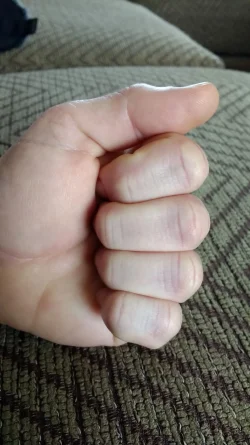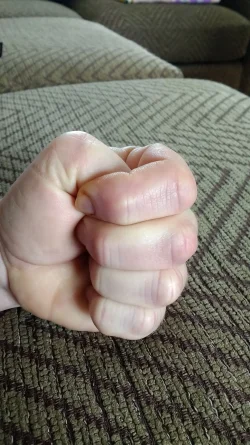At the risk of getting a reputation for dragging up previous topics...

I'm commenting on personal experience, not linking to videos or other published techniques because I'm hugely underqualified to judge either way.
In my life I have had 3 instances of physical 'self defence', all at school.
First time, I was about 11 and a ~15 year old grabbed me from behind with a (what I now know was a very poorly executed) rear choke. As I toppled backwards toward him I was able to kick his face over my head - he let go and started crying so I left - is that a 'win'?
Anyway, the two other instances are the relevant ones.
It was said earlier that broken hand = lost fight.
So, my second 'fight' - I got jumped, shoved by a couple of people when I tried to leave and then punched and knocked out. The person who punched me sustained a fractured 4th metacarpal. I'd say that I substantially lost that fight even though I was the one with unbroken hands.
Third instance was a couple of months later, a small group approached me and one came forward, swinging a wild overhead hammer fist. I blocked it with my left arm and a right hand hook/haymaker put him on the floor which ended the confrontation. What else happened? I fractured the 4th metacarpal in my right hand...
So, let's do some statistical analysis based on this sample of data. In 100% of cases where punches were involved the punching hand sustained injury but 'won'.
In the 33% of cases where a kick was involved that kick proved 100% successful in 'winning' with no injury to the defender.
Statistically, according to that data set, kicks are as reliable as punches but have a lower instance of operator injury

To conflict this, I asked the wife to make a fist as if she was going to hit someone...
First attempt without thinking was like this:
View attachment 21259
Second attempt:
View attachment 21260
From seeing what goes on in the classes I attend, the fingers wrapped around the thumb posture is very common, especially in females - and it takes weeks of one-hour-per-week attendances to drill that out (and it keeps coming back).
Would a dislocated or broken thumb be more instantly debilitating than a cracked metacarpal?


